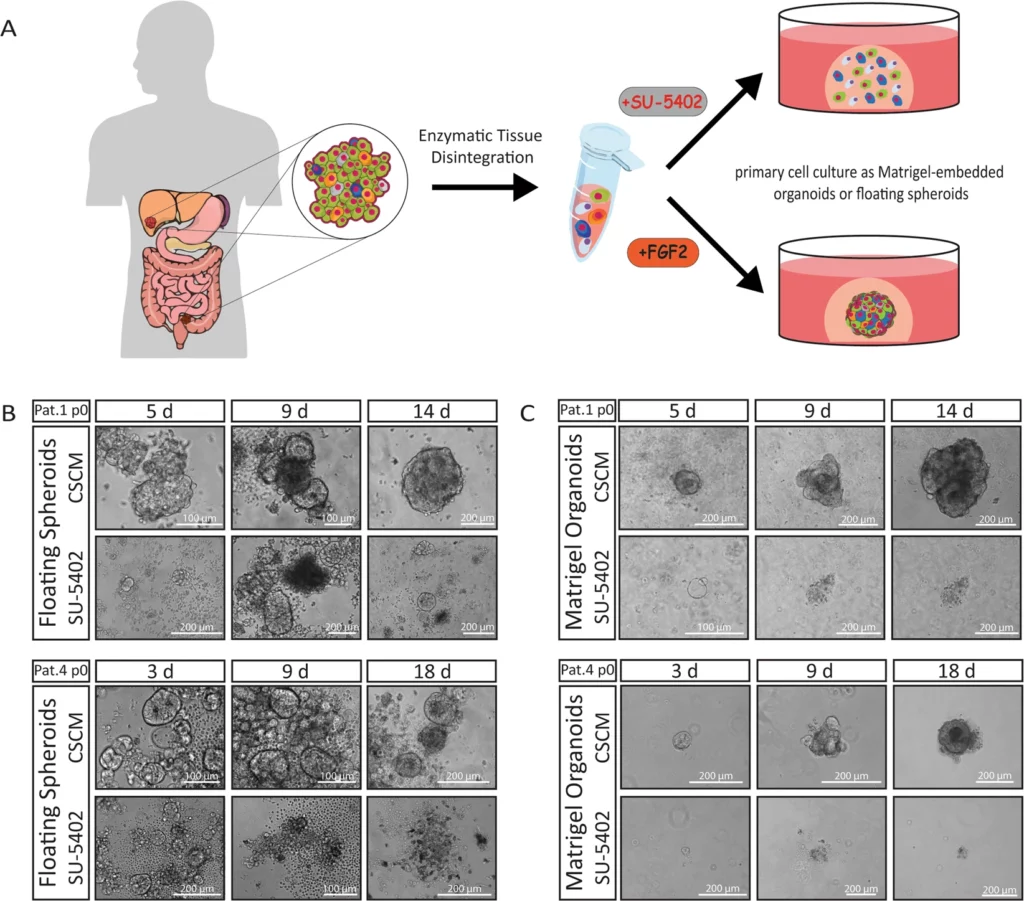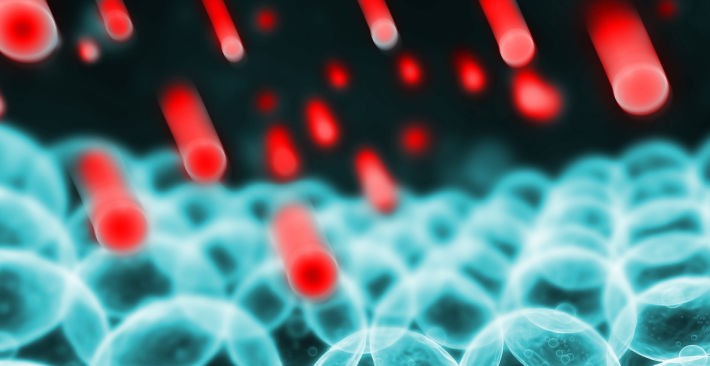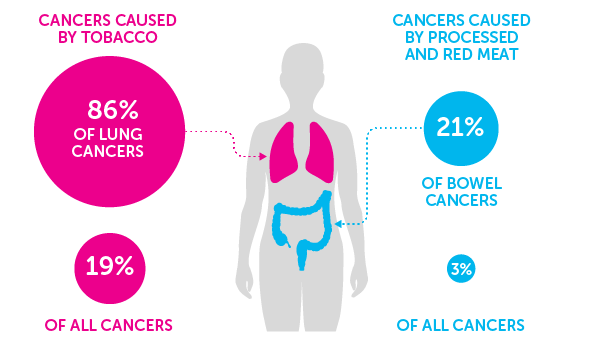The Disabled spheroid and organoid formation by FGFR-inhibition in patient-derived CRC cells is much easier to understand using Mind the Graph’s illustrations.
The scheme created by the author shows that the surgical biopsies were enzymatically digested to obtain a suspension of single cells. The naïve unsorted cells were cultured in FGF2 containing CSC-medium or with the FGFR-inhibitor SU-5402.
The role of fibroblast growth factor 2 (FGF2) in the self-renewal of colorectal cancer stem cells has been investigated
In ‘FGF Signalling in the Self-Renewal of Colon Cancer Organoids’, Jörg Otte and colleagues (2019) reported that when naïve single cells were embedded in Matrigel and cultured in the CSC-medium, a more complex self-organization was observed in all patients analysed.
Genes directly associated with EMT together with a mesenchymal and self-renewing phenotype (TGFB3, ID1, ID2 and ID4) were found to be overexpressed in organoids.
While FGFR-inhibition led to an enhanced MAPK signalling, they observed induced differentiation, a loss of most stem cell markers and an epithelial phenotype.
Cancer stem cells are a subpopulation of malignant cells able to self-renew and to serve as an ongoing source for differentiated tumour cells. In some protocols of CSC culture, Fibroblast growth factor 2 is an important ingredient for maintaining stemness.
In CSC-medium cultured organoids, on the other hand, they detected induction of TGF-β and of all four members of the inhibitor-of-differentiation gene family.
9 consecutive unselected CRC patients were involved in the research.
Check the original article here.
Graphical Abstract powered by Mind the Graph

Some of their conclusions potentially strengthen what was previously known about this field: “The pluripotency-associated genes NANOG, LIN28 and SALL1 were exclusively expressed by hESCs. The GO-terms “negative regulation of BMP signaling pathway” and “SMAD protein signal transduction” were detected in our hESC culture,” Otte suggested.
The authors admit that “GO-term analysis of this gene-set yielded only a few significant results due to the low number of commonly regulated genes. Most of these GO-terms for the CSC-medium condition were associated with active transcription, cell proliferation or increased glucose uptake.
After FGFR-inhibition, we found cell-cycle regulators as well as many genes annotated with “epithelial cell differentiation”, “digestion” or “bile acid and bile salt transport”.”
Papers Impact and Performance
We can analyze with Altmetric data that this paper’s online attention score is higher than 68% of all other articles of a similar age in Scientific Reports.

Improve your article’s accessibility with the power of infographics as well.

Subscribe to our newsletter
Exclusive high quality content about effective visual
communication in science.




